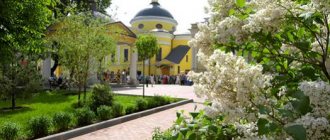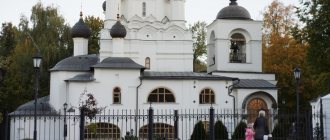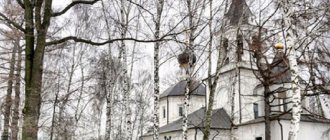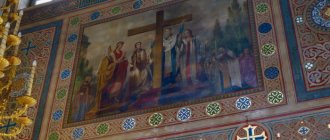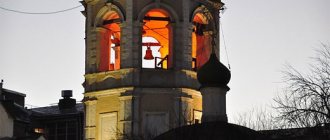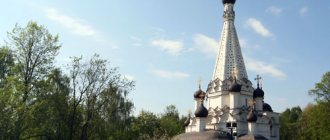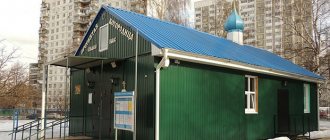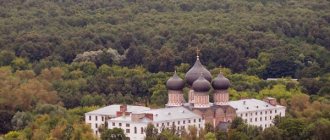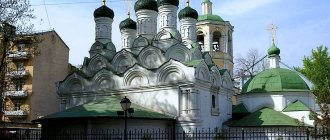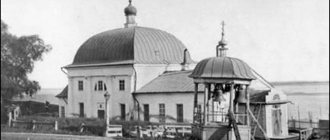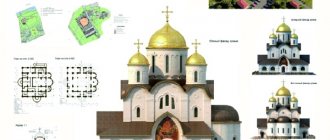The founder of the cathedral is Grigory Stroganov
The rich merchant city of Nizhny Novgorod attracted the attention of a Russian entrepreneur, merchant Grigory Dmitrievich Stroganov. The owner of 200 villages and 15 thousand serfs, who profitably traded salt here, opened an office in the city and began building a temple nearby on the mountain in honor of the feast of the Council of the Blessed Virgin Mary , celebrated the day after the Nativity of Christ.
The red and white silhouette of the temple stood out against the background of the green Volga slope, and nearby stood the stone chambers of the salt industrialist and political figure, representative of the noble family of the Stroganovs - Grigory Dmitrievich.
Who is the architect of the cathedral?
The name of the architect of the Intercession Cathedral is still not known for certain. There is an assumption that the architects were invited from Western Europe. An argument in favor of this version can be the participation of Italian craftsmen in the construction of the Moscow Kremlin. But there is no documentary evidence of this opinion.
In the mid-20th century, a version was born about the authorship of the architectural ensemble being master Postnik Yakovlev from Pskov, nicknamed Barma. According to another assumption, Postnik and Barma are different people who took part in the construction. The names of the architects became known in 1895 from a 17th-century manuscript collection discovered in the Rumyantsev Museum (Moscow). According to the chronicler’s entry, Tsar Ivan the Terrible had “two Russian masters by name (that is, by nickname) Postnik and Barma.” Another collection of chronicles contains a brief message about the builders of the cathedral: “the master was Barma and his comrades.”
There is a known legend that after the construction of the temple was completed, Ivan the Terrible ordered the architects Barma and Postnik to be deprived of their sight. Allegedly, the despot king did this so that in the future craftsmen would not be able to build anything of similar beauty. The story of blinding is mentioned by the Holstein ambassador to Moscow in the 17th century, Adam Alearius (Olearius). The tragic legend is refuted by historical documents. There are records of the participation of Pskov craftsmen in the restoration of the Kazan Kremlin, among them the architect Postnik.
Architecture and materials for construction and decoration
The temple in honor of the Cathedral of the Blessed Virgin Mary is a stone, two-story, five-domed church with a separate bell tower.
Church concept
Externally, the church resembles a precious carved box: the monumentality of the building is combined with exquisite, jewelry-made lush decoration. Graceful stone carvings - vines and flowers, apples and pears, pomegranates and peaches, shells and intricate curls cover the walls with a continuous carpet.
The five domes of the church , placed at the cardinal points, are crowned with forged openwork crosses of a complex design. Red brick walls, intricate white stone carvings and multi-colored domes, like the heads of St. Basil's Cathedral in Moscow, are the decoration of the city.
The dark crimson color of the facades, on which the white stone carvings looked elegant, was painted with yellow, blue and green colors. At the top of the two-tier church there is a two-apse altar, a prayer hall, a refectory and a porch.
From the beginning of the church's formation, services were held in the second, lush and beautiful tier; the first floor was occupied by warehouses. The rich external design of the church symbolizes the Garden of Eden, the Kingdom of Heaven on earth.
Bell tower
The slender bell tower, directed upward, symbolizes the earthly candle to God. The first tier, made in the form of a triumphal arch, is the main entrance to the church, which is decorated with elegant hanging weights and preceded by icons of St. Sergei of Radonezh, the Most Holy Theotokos and St. Seraphim of Sarov.
At the level of the second tier, the bell tower was connected to the porch of the cathedral by a covered passage. On the bell tower of the Stroganov Church there is a clock that musically marks the phases of the moon and the seasons. The 80-kilogram bell at the top of the bell tower chimes the correct time every hour. At the top of the bell tower, under the cross, there is a weather vane in the form of a patterned flag, the symbolic meaning of the Holy Spirit.
Church of the Intercession of the Blessed Virgin Mary
Church of the Intercession of the Blessed Virgin Mary. Built in 1806-1810.
According to the inventory of 1763, the Church of the Intercession of the Mother of God was stone, single-domed, with a chapel of St. John of Damascus. In 1806, the Church of the Intercession of the Mother of God was dismantled. The two-story stone, cruciform, single-domed Church of the Intercession of the Mother of God, founded in 1806, was completed in 1810, thanks to the support of willing donors and the diligence of the builder Jonah. Here are the thrones: at the top of the Intercession of the Mother of God, on the right side of St. Apostles Peter and Paul, on the left St. Nicholas, below St. Jonah, on the sides there are chapels in the name of St. Hilarion the Great and Nil Stolobensky. Thus, the churches of this monastery contain, according to the order of the nine ranks of angels, nine thrones. In the upper Church of the Intercession, the throne restored and decorated with Jonah was consecrated in 1825 by Moscow Archbishop Philaret.
In 1929, a decree was issued to close the monastery. In Soviet times, various organizations were located in the Church of the Intercession: banks, offices, the Ministry of Fuel and Energy and others.
In 1994, the Holy Synod of the Russian Orthodox Church decided to revive the Intercession Monastery as a nunnery, and at the beginning of 1995. nun Feofania (Miskina) was appointed his abbess.
The first room that was transferred to the mother abbess and the first nuns was the lower (ground) floor of the Intercession Church. It was half covered with earth, partitioned into several rooms and hardly resembled the temple of God. There was not even the most necessary things, the windows were boarded up with plywood, we slept on whatever we could find. The altar was fenced off with plywood and paper icons were glued on. Already on the Intercession, October 14, the first liturgy was served in the chapel of St. Neil of Stolobensky - where the relics of the blessed Matrona of Moscow are now located. Little by little, the 1st floor of the Church of the Intercession was cleared, the altar part was adapted for housing, and services were also served in the left aisle.
By the beginning of 1998, the 1st floor was restored, and already on April 4, 1998, His Holiness Patriarch of Moscow and All Rus' Alexy II consecrated the 1st floor of the Church of the Intercession of the Mother of God and the crosses of the Resurrection and Intercession Churches. Mother Feofania recalled:
“His Holiness Patriarch Alexy II scheduled the consecration of the first floor of the Church of the Intercession for April 4, 1998 - the Feast of the Praise of the Blessed Virgin Mary. But we didn’t know anything - it was the first time the Patriarch served with us, and indeed, the first time there was a bishop’s service.
They were very worried; Mother Callisthenia, the dean, acted as regent and administered the rules. And during the Divine Liturgy, the Patriarch elevated me to the rank of abbess, the decree says: “in consideration of the diligent work to revive monastic life in the monastery, the liberation of churches and monastery buildings from previous tenants and their restoration.”
The weather was so beautiful that day - the sun was shining, there was no more snow, we also prepared crosses for the Intercession and Resurrection churches, 5 crosses, His Holiness consecrated them. The festive meal was already in the new refectory in the liberated nursing building.”
On November 22, 1999, His Holiness Patriarch of Moscow and All Rus' Alexy II performed the Great Consecration of three chapels on the 2nd floor of the Church of the Intercession of the Most Holy Theotokos.
On the first floor of the Church of the Intercession, in the chapel of St. Neil of Stolobensky, there is the main shrine of the monastery - the honest relics of the blessed Matrona of Moscow.
Every day after the Divine Liturgy a prayer service is held at the relics.
From the history of the temple
The temple was consecrated in 1713. Three years later, Peter I came to Nizhny Novgorod to serve a prayer service on the occasion of his 50th birthday. Legend has it that the emperor left the temple in anger, ordering it to be closed, which was done. Services resumed 2 years after the death of the king, in 1727.
The Emperor discovered two icons in the church, which he personally ordered from the master Caravac for the Peter and Paul Cathedral in St. Petersburg. Grigory Dmitrievich Stroganov, seeing the icons in the artist’s workshop, bought them secretly from the sovereign, asking the master to paint others for the Peter and Paul Church.
Here another circumstance was revealed that infuriated the hot-tempered emperor. A serf icon painter who studied in Holland at the expense of Grigory Dmitrievich Stroganov, painted the icon “Savior Almighty” .
In the image of Christ, the master depicted the customer of the temple, Grigory Dmitrievich. Peter I, seeing the image, angrily exclaimed: “Should I worship Grishka Stroganov, my servant? This won’t happen!”
The temple burned three times. At the expense of the grandson of the founder of the temple, Alexander Sergeevich, the temple was restored in 1812, strengthened with an additional wall.
In 1930 the temple was closed. During the Great Patriotic War, the building was used as a pharmacy warehouse, thanks to which the ancient iconostasis was preserved - 43 out of 46 icons of the late 17th century survived. In the 60s of the 20th century, the Stroganov Church was transferred to the local history museum.
In 1993, the temple was re-consecrated by Metropolitan Nicholas. The consecration was attended by representatives of the regional administration, the Grand Duchesses Leonida Georgievna and Maria Vladimirovna Romanov, as well as the youth prince George and the director Nikita Mikhalkov who accompanied them, who helped restore the temple.
Symbolism of the cathedral
It is believed that the idea of creating a multi-altar church complex was put forward by Metropolitan Macarius (1482-1563). Initially, it was planned to build 7 chapels, as in the Blachernae Monastery (Constantinople). But, according to the expression of the chronicle, the architects built the cathedral not at the behest of the sovereign, but according to God's admonition.
The construction of several churches in one building was supposed to symbolically point to the Heavenly Jerusalem. According to the Russian writer Nikolai Alexandrovich Chaev (1824-1914), the multi-colored coloring of the domes is associated with the dream of Blessed Andrei (see Life of Blessed Andrei), a witness of the Intercession of the Mother of God in Constantinople. One day the holy ascetic in a dream saw the monasteries of Heavenly Jerusalem with various trees. Some of them were blooming. Others were decorated with bright foliage. Still others had excellent fruits. The garden was amazing with its variety of colors.
Interior of the Strogonov Church
The interior of the church is more modest than the facades. The altar of the temple is three-apse. Apse is a lowered projection of a building adjacent to the main volume. Apses in churches are built in memory of the time of persecution of early Christians. The monks, hiding from persecution, prayed in caves and small, low cells carved into the rocks.
Interior arrangement of the church
In the northern apse there is an altar on which Proskomedia is celebrated, when sour bread and wine are prepared in a special way for the sacrament of Communion. In the southern apse there is a sacristy for storing vestments during worship and sacred vessels. In the middle apse there is a throne, a sacred place in the temple. The throne of the church is dedicated to the Orthodox holiday of the Cathedral of the Blessed Virgin Mary.
The throne of the temple is the place of the presence of Divine Glory. Here the sacrament of the Eucharist (Communion) is celebrated - translated from Greek as “thanksgiving”. The altar is built on an elevated place and marks the upper room where the Last Supper of the Lord took place with the disciples. There are three windows in the altar - a symbol of the Trinity light of the Divine.
In the altar near the eastern wall, opposite the throne, there is a high place where a throne chair is installed, which denotes the mysterious presence of the Heavenly King, the Lord Jesus Christ.
The elevation on which the altar and iconostasis stand is the solea, a semicircular ledge in the center of the solea opposite the Royal Doors is the pulpit. The pulpit is a symbol of the stone rolled away by an angel from the doors of the Holy Sepulcher and announcing the Resurrection of Christ.
Prayer hall
The prayer hall of the church is small in size, but very bright. Each of the five chapters of the church has windows; the sun's rays easily enter the prayer hall, falling on the iconostasis. The fine, lush carvings and colorful painting of the iconostasis are striking. The icons “Adoration of the Magi” and “Cathedral of Our Lady”, “Savior Pantocrator”, painted by a serf master who studied in Holland, are expressive.
The floor of the prayer hall is made of metlakh tiles. On the second floor there are choirs, famous for their singing. on the walls around the choir :
- The Jews stone the first martyr Archdeacon Stephen.
- The taming of the storm by our Lord Jesus Christ.
- Prophet Moses prays before the Lord for the people of Israel.
- Prayer of King Solomon.
- Prayer of barren Anna, the future mother of the prophet Samuel, at the entrance to the Jerusalem Temple.
- Meeting of Jesus Christ with a Canaanite (pagan) woman.
The entrance to the prayer hall is preceded by icons of the Lord's true disciples :
- John Chrysostom;
- Tikhon of Zadonsky;
- Ignatius Brenchaninova;
- Theophan the Recluse;
- Gregory the Theologian.
Here are the frescoes of Prince Vladimir and Olga. In the icon cases there are icons of the Annunciation and St. Nicholas the Wonderworker.
Refectory
The walls of the refectory part of the temple are painted with paintings of biblical scenes. The eastern wall - a small iconostasis decorated with grapes - is covered with white stone carvings and gilding. At the top are icons of Jesus Christ and the four evangelists. The Evangelist Mark is symbolized by Leo in commemoration of the power and royal dignity of the Lord.
The eagle with the Evangelist John symbolizes the height of the Gospel teaching and the mysteries of God conveyed in it. Luke is depicted with Taurus, emphasizing sacrificial service. With the Evangelist Matthew, an Angel is depicted as a symbol of the novitiate into the world of the Son of God. The row is crowned by a Dove - a symbol of the Holy Spirit.
Below are fresco illustrations :
- the Lord's conversation with the Samaritan woman;
- the Lord's bearing of the Cross;
- Sunday of the four days of Lazarus.
